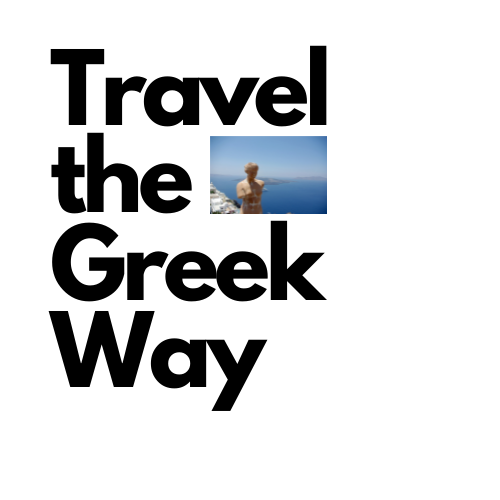The archaeological site of the Lyceum of Aristotle in Athens is one of the most important places in the history of Western European intellectual culture and symbolizes the peak of Greek philosophy.
The Lyceum of Aristotle in Athens, or to be precise the gymnasium of the Lyceum, was quite recently discovered in the center of Athens, in 1996.

According to ancient accounts, the Lyceum of Aristotle was an idyllic, green suburb, outside the Dioharus Gate near the banks of the River Ilissos.
Dioharus was one of the thirteen gates of the classical period when Themistocles’ walls surrounded Athens.

The Lyceum area had (probably) taken its name from the Sanctuary of the Lyceum (Wolf) of Apollo, which existed before Aristotle founded the gymnasium, but that has not yet been confirmed. But who was Aristotle and what was the Lyceum?
*Some of the links below are affiliate links. If you click and buy something through them, I may earn a small commission — which costs you absolutely nothing!
My Latest Video on Aristotle’s Lyceum
In this video I arrive at Evaggelismos metro station in central Athens – one stop away from Syntagma. I walk by the War Museum, and the Byzantine Museum, and explore the important site of Aristotle’s Lyceum.
Who was Aristotle
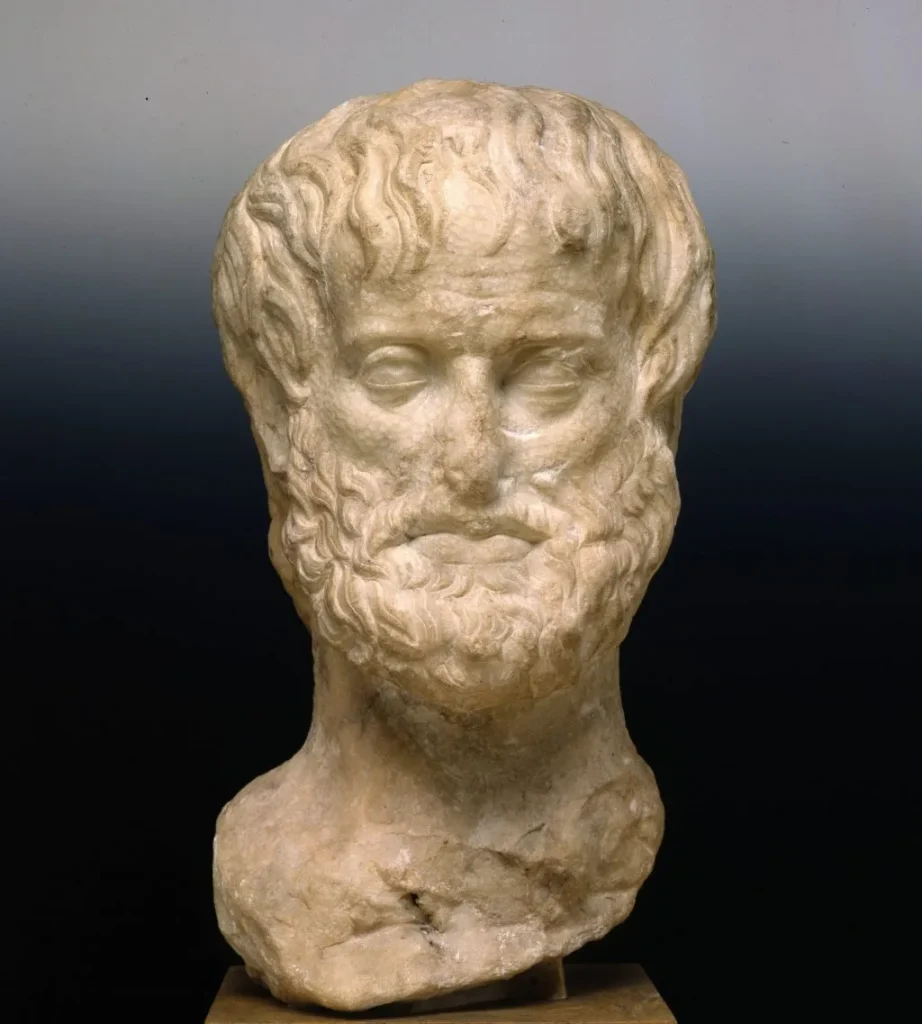
Aristotle is regarded as the first scientist of all time with treatises on physics, biology, zoology, metaphysics, logic, ethics, rhetoric, poetry, theatre, and music.
He developed the first complete Western philosophical system. He laid the foundations of empirical methodology, he was one of the first to classify and study species of flora and fauna.
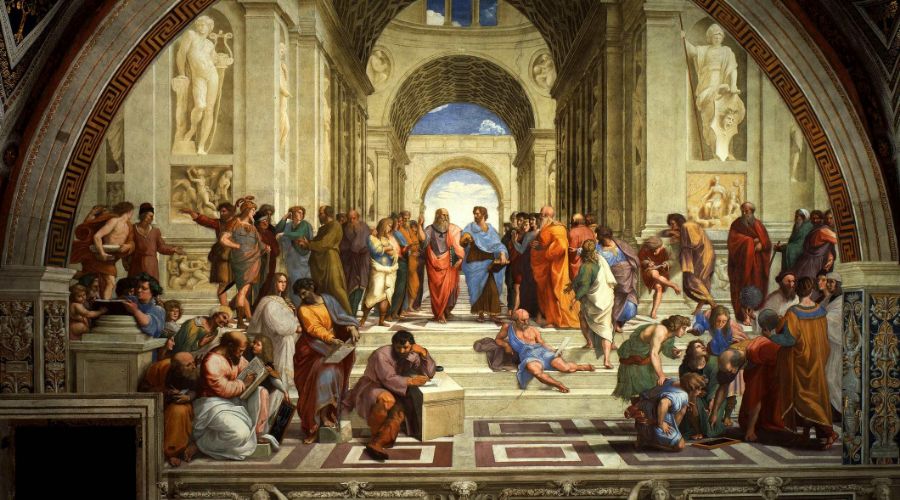
Aristotle believed passionately in the value of education and learning and the superiority of poetry over history since the former expresses the universal, general, and timeless and is, therefore, the quintessence of learning.
Aristotle was above all a great philanthropist. This is evident in his will where he made thoughtful provisions for many friends and his family.
But his great charity is shown in his decrees that none of the slaves who served him should be sold to a new master after his death, but they should be freed as soon as they come of age.
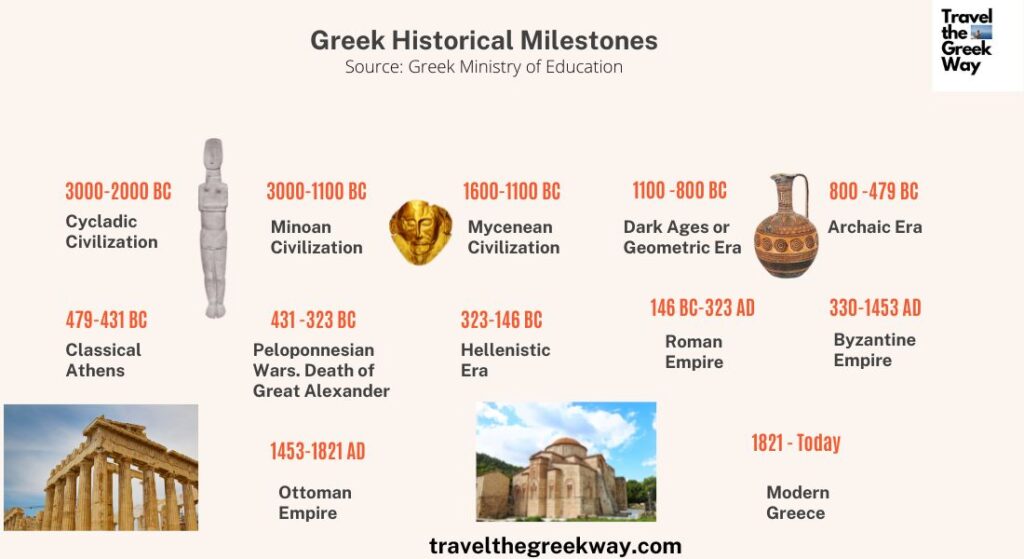
Aristotle was born in Ancient Stageira, in Macedonia in 384 BCE and when he was 17 years old he was accepted into the Academy of Plato in Athens (367 BC) where he stayed for the next 20 years until Plato died in 347 BCE.
In 342 BCE he became the teacher of the 13th-year-old (Great) Alexander, in Macedonia where he stayed for the next 6 years.
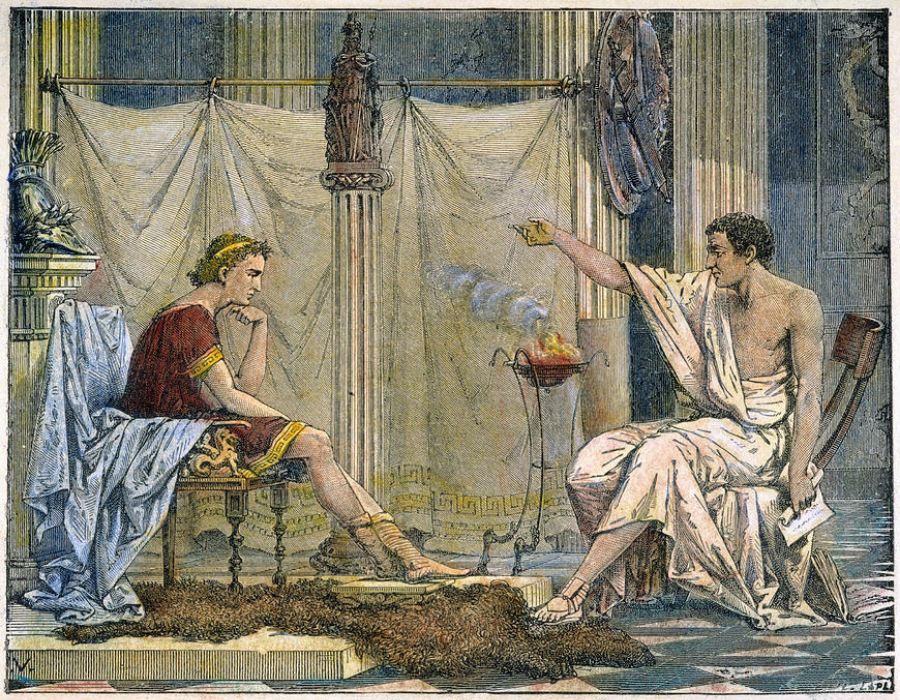
Note: Plato’s teacher was Socrates
Aristotle returned to Athens in 335 BCE and founded his philosophical school, the Lyceum. Alexander happily sponsored the Lyceum so Aristotle was able to build magnificent houses and galleries.
Aristotle had the habit of teaching while he was walking (Peripatos) so that is why his school was called the Peripatetic School and his students were Peripatetic philosophers.
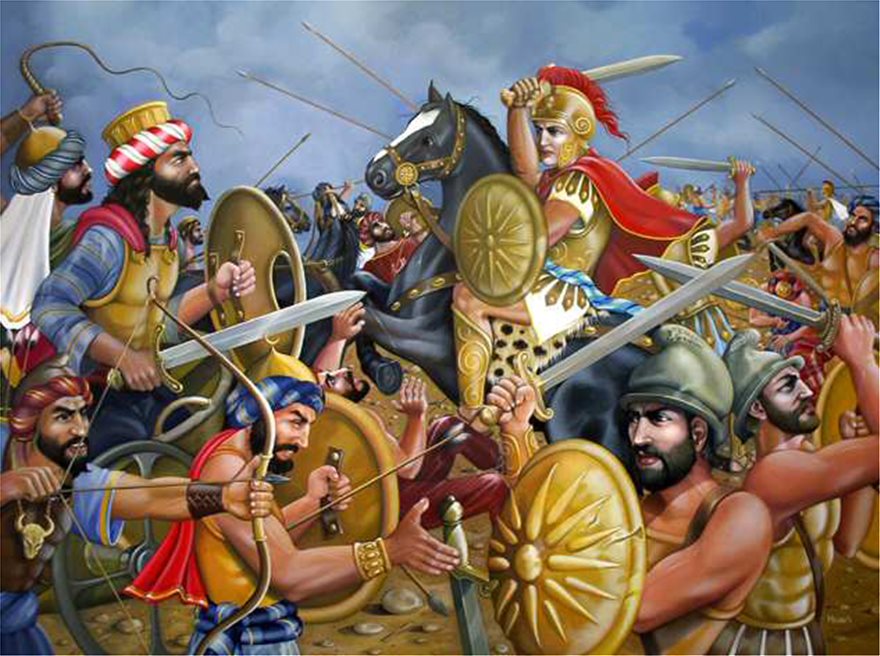
During the same period, Alexander the Great was conquering the eastern part of the known world at the time.
Pytheas the Massaliotis discovered the western part of Europe, the British islands, Scandinavia, Iceland to the Baltic Sea.
Aristotle in Athens managed to conquer and map human knowledge and science in his books. There was a great desire in the spirit of Greeks to reach the limits of the land and knowledge.
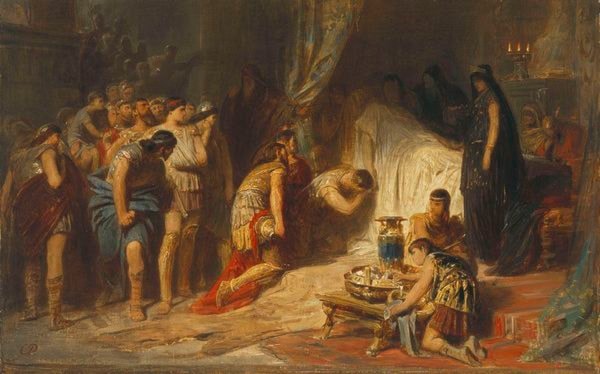
In 323 BCE when Great Alexander died, the Athenians who resented Macedonians accused Aristotle of impiety and he was forced to leave the city.
He went to Chalkis, the main town of Evia island to seek refuge but in October 322 BCE overwhelmed by grief and melancholy, Aristotle died from stomach disease.
The Lyceum school continued to function under a series of leaders until the Roman general Sulla destroyed it during his assault on Athens in 86 BCE.
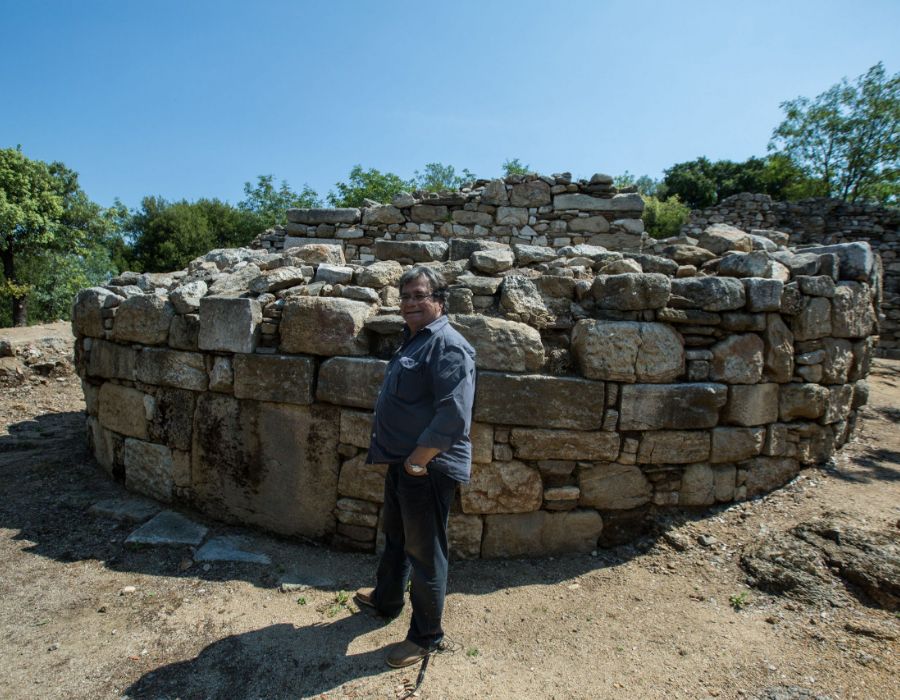
His ashes were buried in ancient Stagira with honor and glory after the rulers of Chalkis notified the Stagiites that if they wanted they could receive his ashes and bury them in his homeland.
Remarkably, in May 2016, the archaeologist Konstantinos Sismanidis announced that a structure found at Stagira in Halkidiki, near today’s Olympiada, belongs to the tomb of Aristotle.
Where to Stay near Ancient Stagira: Liotopi, a beautiful property in a large lush garden, 1 minute from the beach.
The (few) Remains of the Lyceum of Aristotle
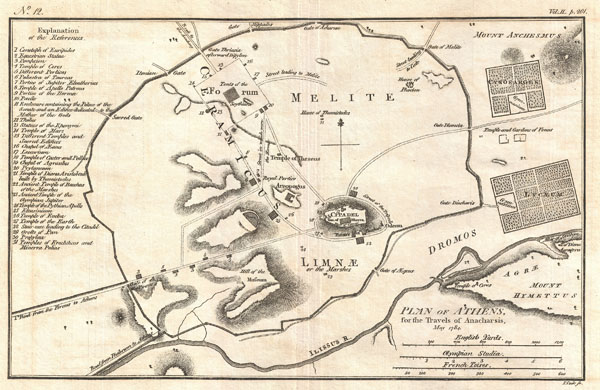
The Lyceum was located between the Ilissos River and the Olympian Zeus Temple and was spread toward the National Gardens and Kolonaki area.

In 1996, during the construction of the new Museum of Modern Art in central Athens, the remains of Aristotle’s Lyceum were discovered, and in 2014, it was first opened to the public.
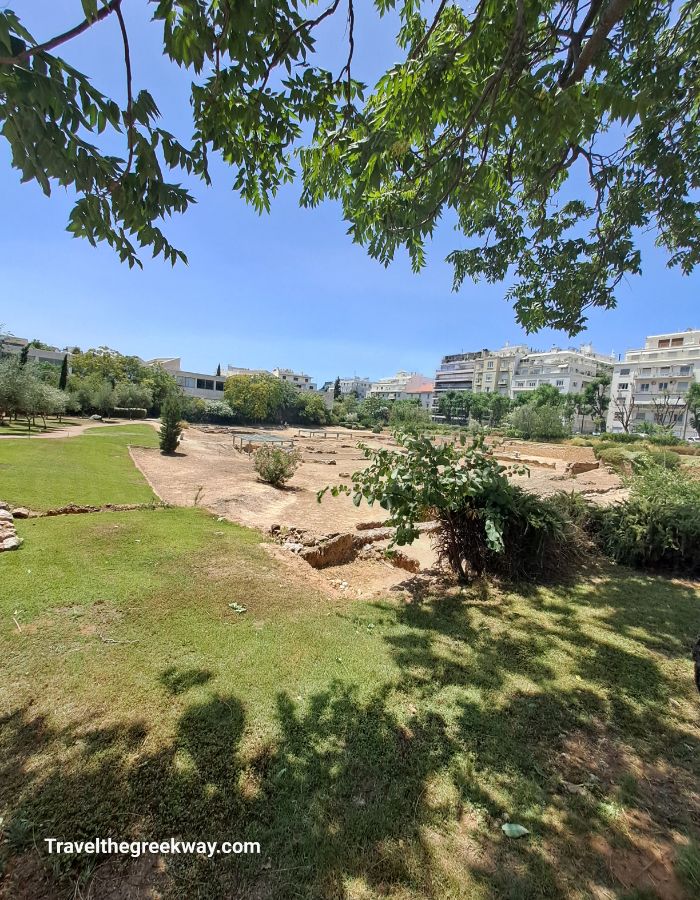
The archaeological site is located next to the impressive building and gardens of the Byzantine and Christian Museum so the idea was to connect the two sites and make it a public place to stroll (peripatos) just like Aristotle and his students did, so many centuries ago.

Aristotle’s Lyceum was used not only for philosophical debate but also for gatherings, cult practices, and military exercises. As the Lyceum contained many buildings, it is thought that it covered multiple times the archaeological site you will see today. It is believed that it spanned north possibly to modern Kolonaki Square and through the nearby national gardens.
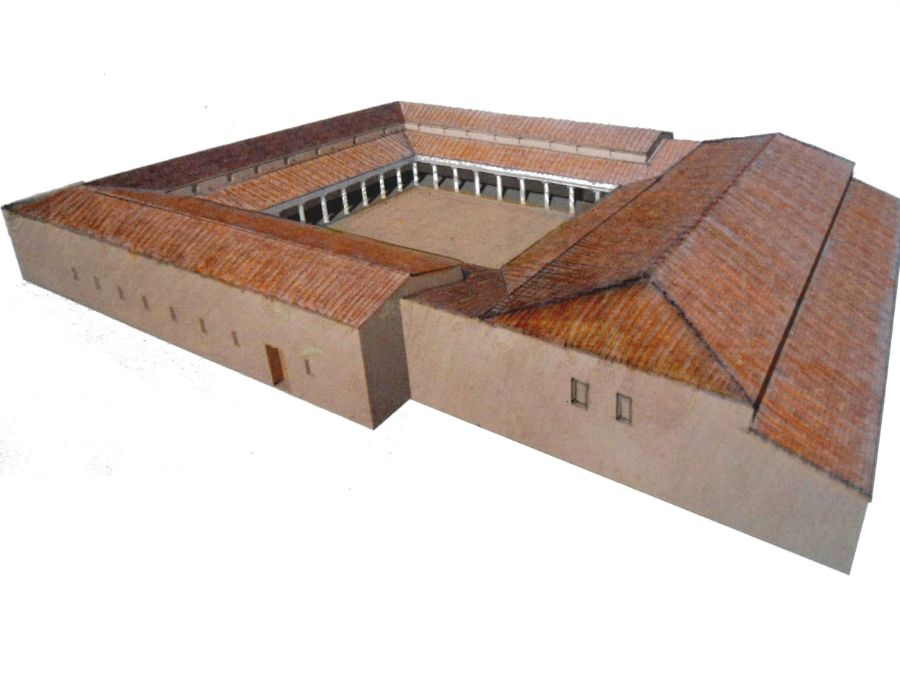
However, on the site, you will see mostly the modest remains of the Palaestra. Palaestra was the training area for athletes in wrestling, boxing, and pankration (a combination of wrestling and boxing).

Palaestra was a large building with a longitudinal axis from north to south and was preserved, with repairs and additions, for about seven centuries, until the beginning of the 4th century CE when it was finally abandoned.
It consists of an inner courtyard surrounded on three sides by galleries, behind which spacious rectangular rooms were developed symmetrically.



You will also see the baths which are part of the Palaestra, one in the eastern part and one in the western part. In one of the rooms, the athletes were anointed with oil, the cone room, where the athletes rolled in the sand, and the boxing room where there were boxing bags for the training of the athletes.

In the 1st century CE, a cold bath tank for athletes was constructed on the north side of the courtyard, with its narrow sides arched.

The Lyceum had a large and excellently organized Library that served as a model for the establishment of the libraries of Alexandria and Pergamos. In the next 13 years, Aristotle, created the vast majority of his remarkable scientific works, a wonder of works that were admired during his time and today.
The Alexandrians estimate that he wrote about 400 books and most of his works are gone.

I have been on the site twice this year. If you visit the Acropolis or the other sites of Athens, you may think that there is not much left to see.
However, the site is well-groomed, a beautiful stroll (peripatos) in flowers and trees, and the idea of the Lyceum and the personality of Aristotle act as a magnet for me.

I often sit on the benches surrounded by Greek herb bushes and I contemplate life. There is also a beautiful black cat on the premises, friendly and sweet, which makes the place even more inviting 🙂
You may also enjoy: Best Day Trips from Athens
Entrance Time and Tickets for Aristotle’s Lyceum

The entrance fee to Aristotle’s Lyceum is €5 per person.
The general tickets for the other sites are:
- Acropolis Hill and Slopes (€30)
- Ancient Agora of Athens and its Museum (€20)
- Roman Agora (€10)
- Kerameikos, Athens’ Ancient Cemetery (€10)
- Hadrian’s Library (€10) and
- Olympeio (Temple of Olympian Zeus) (€20)
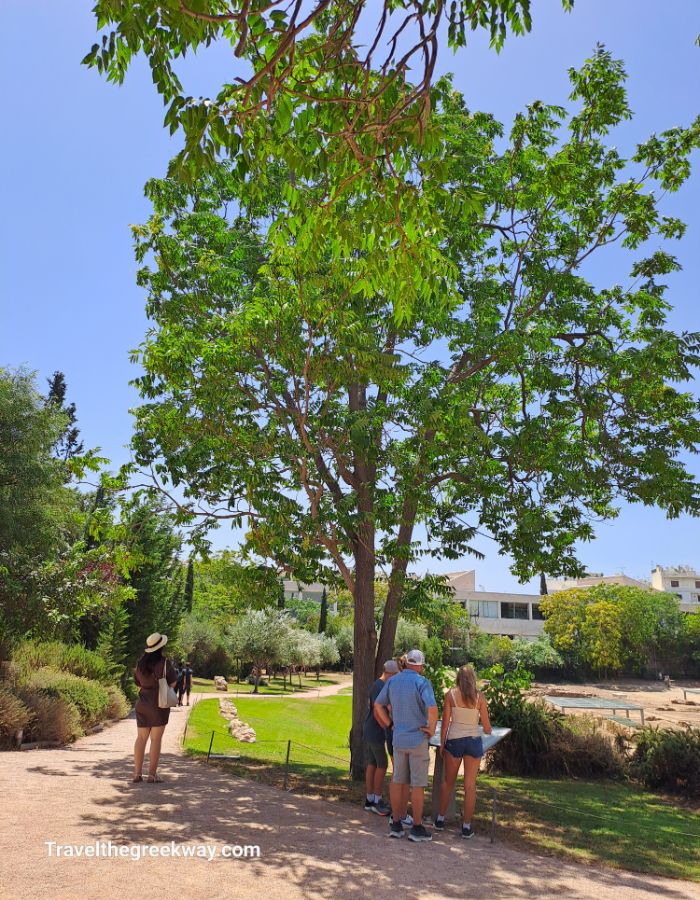
Free Entrance: From November to March, admission is free in sites on the first Sunday of the month and on the dates March 6th, April 18th, May 18th, the last weekend of September, and October 28th.
Aristotle’s Lyceum Summer Opening Hours 8:00-20:00.
Where to Stay near the Lyceum of Aristotle

Kolonaki is a posh area of Athens, built on the slopes of Lycabettus Hill, surrounded by expensive shops, eclectic restaurants, and galleries.
The Alopece City Apartment (self-catering, ideal for 2-4 persons) is a beautifully decorated apartment located on a quiet street in Kolonaki close to the Metro Evaggelismos (2 stops away from Acropolis).
Tips for Visiting the Lyceum of Aristotle in Athens

Is Lyceum of Aristotle Accessible?
Yes, it is. There is flat access from the entrance around the site.
Is there a WC inside the Lyceum of Aristotle?
No, there isn’t.
Can I drink or eat inside the Lyceum of Aristotle?
You are not allowed to eat or drink inside any archaeological site in Greece, only water is allowed to be carried around. There is no café/restaurant on the site.
Recommended Guided Tours for Athens

I would highly recommend you book a Guided Tour of the Acropolis of Athens, Ancient Agora and Agora Museum (4 hours) with a local licensed guide (from the Greek Ministry of Culture). It will bring to life how Athens of the 5th century BC was.
If you would like to enjoy a full-day private guide to all Athens Highlights, (8 hours), then this tour is highly recommended with a Badge of Excellence from Viator.
Nearby Sites to the Lyceum of Aristotle
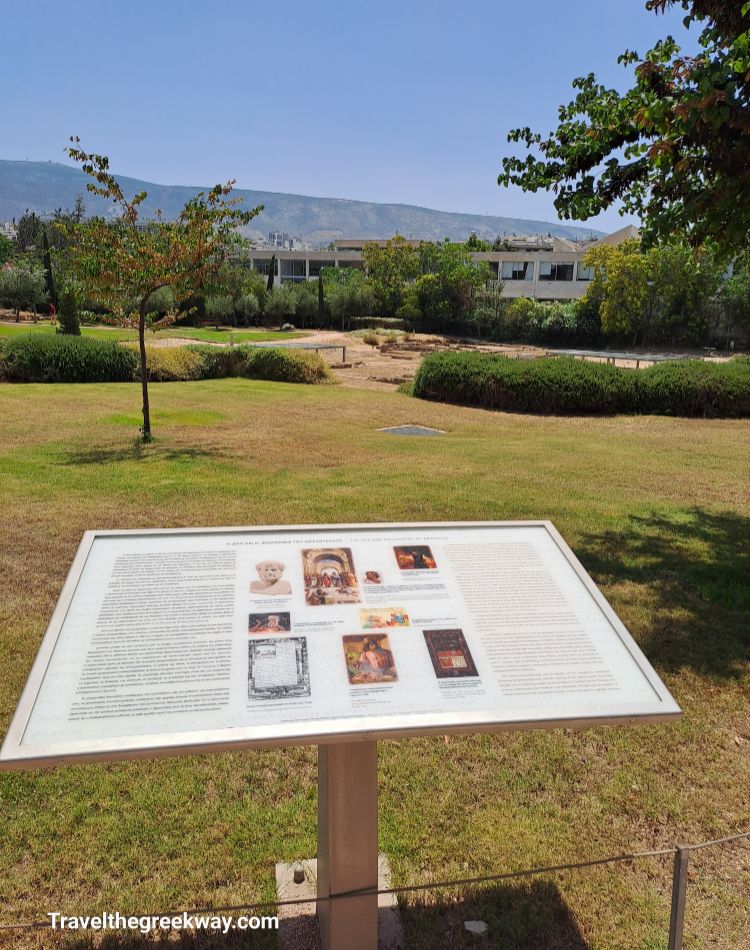
- The Byzantine and Christian Museum
- The War Museum
- The Modern Art Museum
- The Cycladic Art Museum
- The National Gardens and the Greek White House (in Rigillis St)
Get the Best of Greece! Join Our FB Group & Subscribe to My YouTube Channel!
For more travel to Greece tips and beautiful destinations in the Greek islands please join my FREE Facebook Group or SUBSCRIBE to my YouTube & TikTok channels for amazing videos of Greece! Until then happy and safe travels, Evgenia.
Did you visit the Lyceum of Aristotle in Athens?
Let me know what you think about visiting the Lyceum of Aristotle in the comments below, I’d love to hear whether I managed to get it onto your bucket list!
Suggested Reading on the Lyceum of Aristotle in Athens:
Complete Works of Aristotle, Vol. 1 Bollingen Series Edition
Aristotle for Everybody: Difficult Thought Made Easy
More Athens Travel Resources
Essential Travel Resources for Greece
- ‘Hello’ and ‘Thank You’ in Greek: “Ya sou” and “Efharisto”
- Booking.com: I use Booking.com mostly for Europe.
- All-Inclusive Resorts in Greece
- FerryScanner to book ferries to the Greek Islands
- Rent an Affordable Car in Greece
- Athens Metro Website (timetables and ticket info)
- Trains (Hellenic Train)
- Public Buses KTEL
- Get Your Guide: For all your day or multi-day tours and city guide needs, I use Get Your Guide
- Emergency Numbers Anywhere in Greece: AMBULANCE 166 – FIRE 199 – POLICE 100– EMERGENCY NUMBER 112
